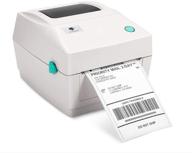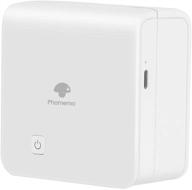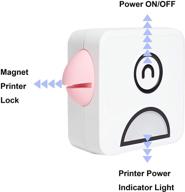Credit Card Readers
Credit card readers, also known as point of sale (POS) terminals, are essential for accepting credit and debit card payments in retail stores, restaurants, and other businesses. Choosing the right credit card reader can help create a seamless checkout experience for customers and efficient payment processing for merchants.
Types of Credit Card Readers
- Countertop terminals - Stationary readers that sit on the checkout counter connected to a phone line, ethernet cable, or WiFi.
- Mobile readers - Portable units that connect to smartphones or tablets via Bluetooth or headphone jack.
- Payment terminals - All-in-one units with built-in registers for processing transactions.
Key Features
When selecting a credit card reader, key factors to consider include:
- Connection type - Readers can connect via phone line, ethernet, WiFi, Bluetooth, or headphone jack.
- Accepted payment types - Most readers take credit cards, debit cards, and mobile wallets like Apple Pay.
- Chip cards - Europay, Mastercard, and Visa (EMV) chip card readers provide enhanced security.
- Tap-and-go - Contactless payments allow customers to tap cards or phones to pay.
- Receipts - Devices print or email receipts to customers.
- Reporting - Review detailed reports on sales, taxes, inventory, and more.
Top Credit Card Reader Brands
| Brand | Details |
|---|---|
| Square | Affordable readers for smartphones and tablets suited for small businesses. |
| Clover | Robust POS terminals with advanced features for larger operations. |
| Shopify | Integrated hardware and software solution for ecommerce businesses. |
| PayPal | Card readers supporting PayPal payments and flexible pricing plans. |
Choosing the Right Reader
The right credit card reader depends on your business needs and budget. Key questions to ask:
- What types of payments do you need to accept?
- Do you need mobility or prefer a countertop terminal?
- How many transactions do you process monthly?
- What features like receipts, reporting, and inventory management are important?
- How much are you willing to spend?
By evaluating your requirements, you can find an affordable credit card reader well-suited for your business.
Receipt Printers
Receipt printers are a crucial part of any point-of-sale (POS) system. They allow businesses to provide receipts to customers confirming their purchases. There are several types of receipt printers to choose from based on business needs.
Impact vs Thermal Printers
The two main technologies for receipt printers are:
- Impact - Uses a mechanical arm to stamp text onto the paper.
- Thermal - Prints using heat-sensitive paper and a thermal print head.
Key differences:
| Impact | Thermal |
|---|---|
|
|
Popular Receipt Printer Brands
- Epson - Reliable printers with advanced paper handling and fast print speeds.
- Star Micronics - Robust impact printers for high-volume retail and hospitality businesses.
- HP - Compact thermal printers with wireless connectivity.
- Citizen - Affordable, high-quality thermal POS printers.
Key Factors in Choosing a Receipt Printer
- Print speed - Fast print speeds under 8 seconds deliver receipts quickly.
- Print resolution - Higher resolutions allow sharper barcodes and logos.
- Paper width - Standard options are 2.25" for thermal and 3.25" for impact.
- Connectivity - Look for USB, serial, Ethernet, and wireless connectivity.
- Reliability - Seek printers designed for high-volume POS use.
Considering your sales volumes, counter space, and budget will help determine the right receipt printer.
Key Benefits of Receipt Printers
- Provide transaction records for customers.
- Can print coupons and promotions to encourage revisits.
- Support customer returns and exchanges.
- Improve checkout experience over hand-written receipts.
By investing in a quality POS receipt printer suited for your needs, you can streamline checkout and improve customer satisfaction.
Barcode Scanners
Barcode scanners are essential in retail stores and warehouses to quickly and accurately capture product information during checkout, inventory, and order fulfillment processes. Choosing the right barcode scanner can greatly improve efficiency and minimize errors.
Barcode Scanner Types
Common barcode scanner types include:
- Handheld - Portable for scanning items around a store or warehouse.
- Counter/Presentation - Stationary scanners at checkout counters.
- Built-in - Integrated into point-of-sale (POS) systems and cash registers.
- Mobile Computer - Scanners with full operating systems for advanced data capture.
Key Features
When evaluating barcode scanners, key features include:
- Scanning range - Distance and angle for successfully scanning barcodes.
- Scan speed - Scans per second for rapid processing.
- Durability - Ability to withstand drops and spills.
- Data interface - Connectivity like USB, Bluetooth, WiFi.
- Supported barcodes - 1D, 2D, PDF417, QR codes.
Top Barcode Scanner Brands
Leading barcode scanner manufacturers include:
- Honeywell - Rugged scanners built for demanding environments.
- Zebra - Feature-rich scanners with advanced data capture.
- Datalogic - Innovative scanners optimized for fast checkout.
- NCR - Cost-effective counter and built-in POS scanners.
Choosing the Right Model
Important selection criteria:
- Environment - Counter, warehouse, outdoors?
- Scanning volume - Low, medium, or high?
- Barcode types - 1D, 2D, QR codes?
- Distance needed - Short or long range?
- Budget - Lower-cost wired or advanced wireless scanners?
Carefully evaluating your workflow requirements will ensure you choose the most appropriate barcode scanner for your needs.
Benefits of Barcode Scanners
- Increase checkout and fulfillment speed.
- Reduce errors from manual data entry.
- Get accurate inventory counts.
- Capture detailed sales and purchasing data.
Investing in the right barcode scanning solution pays off through significant time and cost savings over the long run.
Choosing the Right POS System
Selecting the right point-of-sale (POS) system is crucial for retailers and restaurants to run transactions, track sales, manage inventory, and gain business insights. Keep these key factors in mind when evaluating POS solutions.
Types of POS Systems
Common POS system types include:
- Cloud-based POS - Accessed online from web browsers or mobile devices.
- On-premises POS - Software installed on local servers and hardware.
- Hybrid POS - Combination of cloud and on-site components.
Key POS Features
Essential features to look for in a POS system:
- Sales reporting - Track sales data and trends.
- Inventory management - Stock tracking and reorder notifications.
- Customer management - Collect customer data and purchase history.
- Payment processing - Accept credit cards, debit cards, mobile payments.
- Receipts and invoices - Customizable digital or printed receipts.
- Discount and promotion options - Enable discounts, coupons, and loyalty programs.
Top POS System Brands
Leading POS system providers include:
- Shopify POS
- Square
- Clover
- Lightspeed
- Toast
- Revel
Factors to Consider
When evaluating POS systems, determine:
- Number of locations needed
- Inventory size and sales volumes
- Specific industry requirements
- Onsite vs cloud vs hybrid setup
- Hardware costs
- Expected transaction speed
Selecting a POS system tailored to your business requirements will maximize value and return on investment.











